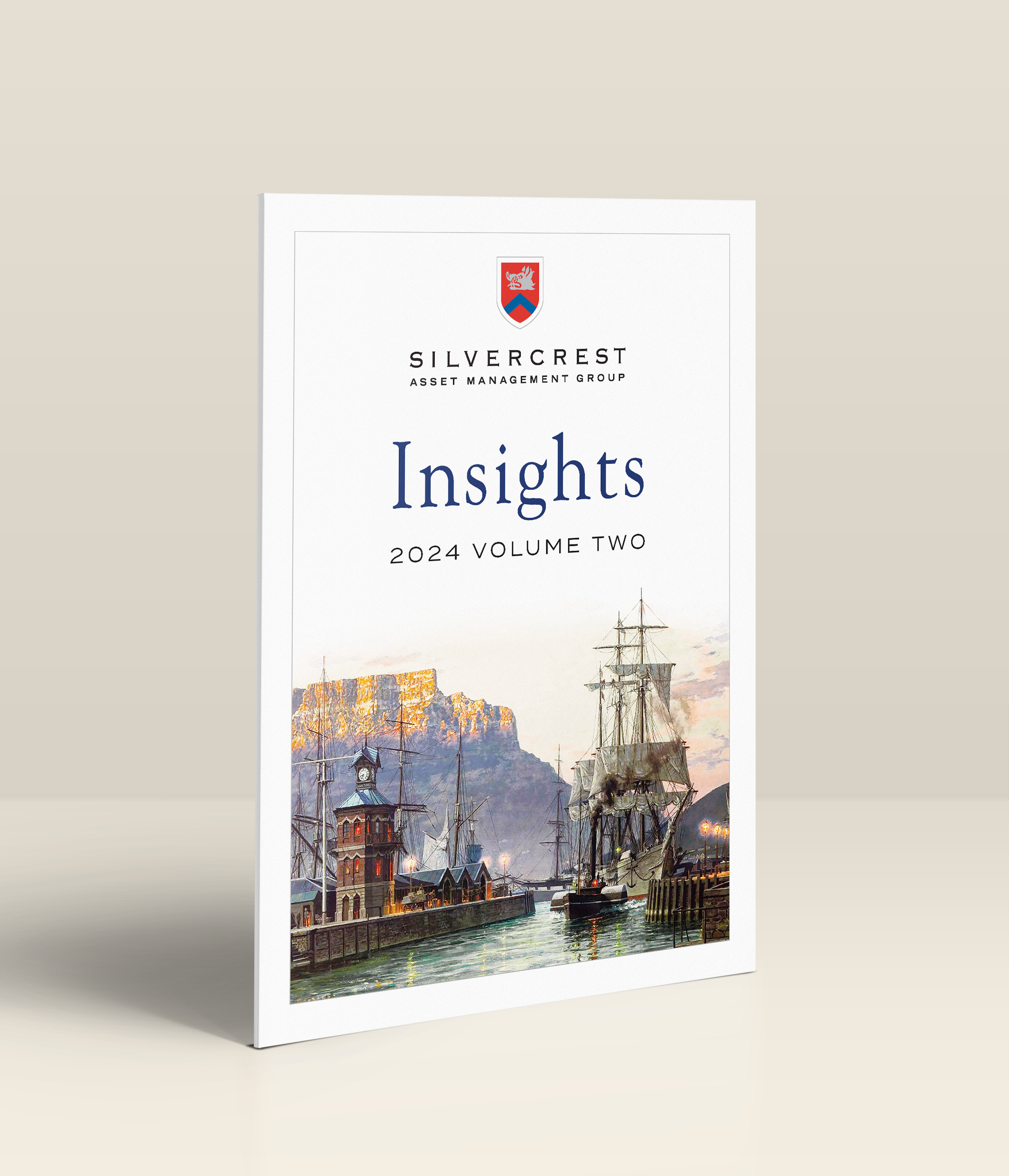What is the current state of U.S.-China relations, and what are the implications for investors?
I don’t think it’s an exaggeration to say that U.S.-China relations are at their worst point since the U.S. opened diplomatic relations with mainland China in 1979. But before I go on, I should give a little background on my perspective. My first visit to China was in 1986, and before joining Silvercrest I worked there for almost ten years. I taught at one of China’s top universities, Tsinghua, and was frequently involved in “Track 2” talks between the two countries. After returning to the U.S., I taught a course on U.S.-China negotiations at Columbia for several years. My wife and three children were all born in Beijing, and we have relatives in the city, so even outside of work I stay closely attuned to what is happening there.
The debate about whether the U.S. and China are entering a “new Cold War” is over. We are in a Cold War. But unlike the original Cold War with the Soviet Union, the economies of the two main rivals are still deeply intertwined. We’ve never been in a situation before where the world’s two largest economies—comprising almost half of global GDP—are at geopolitical loggerheads like this. Many U.S. companies depend on China for a significant portion of their revenues and vice-versa. It raises the stakes for investors immensely.
How did the U.S. and China become so intermeshed, and what has changed?
It began in the late 1960s, when Communist China, under Mao, broke with the Soviet Union. It was an ugly divorce that almost devolved into war. As the adage goes, “the enemy of my enemy is my friend,” so despite their stark differences, the U.S. and China saw each other as useful allies for purely pragmatic reasons. After Mao died in 1976, China had leeway to begin opening and reforming its economy along market lines. It started slowly, but eventually foreign companies began to see immense opportunity in China, both as a production base and a consumer market. In 2001, China joined the World Trade Organization further amplifying hopes this positive momentum could continue. Today it’s popular to dismiss these hopes as foolish, but I don’t think they were at the time. China really did see incredible changes. Even if their direct say in politics remained extremely limited, people could start their own businesses, own their own homes, and travel, study, and work abroad.
If I had to identify a turning point, it would be the 2008 global financial crisis. Prior to that, most Chinese policymakers believed, albeit begrudgingly, that for China to become a truly modern, wealthy country, it would have to become more like the United States. Perhaps this would be on its own terms and at its own pace, but still, the U.S. was the model. China’s response to the financial crisis was directing its state-owned banks to fund an investment boom to keep its economy growing. On the face of it, this appeared to work, and it convinced many—at home and abroad—that China had a superior economic and political model compared to the U.S. There was nothing to learn, nothing to imitate anymore. At the same time, in the wake of the financial crisis, Americans were becoming more and more conscious of the downsides of globalization, especially the impact on losing industries and on industrial workers. They saw a more prosperous China—still ruled by a Communist Party—becoming increasingly confident and assertive on the world stage. People in both countries began to see competition with the other in increasingly zero-sum terms: they win, we lose; they lose, we win.
So where does this leave us?
Tensions have always been part of the U.S.-China relationship. But for many years, both countries saw significant benefit in the relationship, so if they couldn’t solve these differences, they at least tried to manage them. Now these differences are proliferating, and the political incentive on both sides is to highlight or even exacerbate them. The sheer number of sore points are hard to keep track of: concerns over China’s expanding and rapidly modernizing military; its contentious maritime claims in the South and East China Seas; theft of valuable intellectual property from U.S. companies; sanctions over human rights in Hong Kong and Xinjiang; effective regulation of Chinese companies listed on U.S. stock exchanges; the rising global role of Chinese technology firms like Huawei and ZTE and U.S. efforts to curb their access to advanced computer chips; Chinese trade policies designed to boost exports and U.S. retaliatory tariffs; China’s ambitious investment plans abroad, and the financial influence it brings; China’s moral and practical support for Russia in Ukraine; and, of course, Beijing’s long-standing ambitions to bring Taiwan back under its control. For its part, China sees the U.S. as a declining power desperate to “contain” China and prevent it from realizing its destiny.
It’s clear that at least as far as political leaders are concerned, both countries want to reduce their exposure and vulnerability to the other. That isn’t easy, and a lot of companies are caught in the middle. China demands they comply with domestic directives like censorship or technology transfer that may conflict with their obligations elsewhere. The U.S. imposes sanctions that may ultimately force even non-U.S. companies to choose between doing business with China or with the U.S. The U.S. isn’t alone in its concerns about a rising China: Japan has been bolstering its military relationships and offering subsidies to companies that exit China and come back home. But even U.S. allies like Taiwan and South Korea have complained about the impact of U.S. semiconductor restrictions and pressed for exemptions. In recent months, Nvidia has seen its share price jump up and down on daily news about the potential impact of U.S. sanctions on its AI chip sales to China.
This makes it sound like China is a juggernaut, whose growing power is all but unstoppable. Is that an accurate picture?
No. In fact, we’ve long been concerned about the outlook for China’s economy, and these worries look increasingly justified. This year, many were hoping for a strong rebound in China after its COVID restrictions were finally lifted. This hasn’t materialized, and the real estate sector in particular has been in a serious slump. But business confidence overall has suffered. Some call it China’s version of “long COVID”, but it’s more than the after-effects of COVID at work. Ever since 2008, China has depended on easy credit from state banks and even more dubious channels to boost investment and keep its growth numbers up. But without market accountability, a lot of these investments have long since gone sour, only to be papered over with more loans. When Xi Jinping came into power, more than a decade ago, he promised market-oriented reforms to correct this. Instead, he has presided over growing political control over entrepreneurs and business, and a massive centralization of power and decision-making. The virtual closure of China to the outside for almost three years during COVID solidified this trend towards growing isolation. Just as a practical matter, it’s much harder for scholars or business executives to travel to China to get an unvarnished, first-hand view of what’s going on there, which in turn raises risk perceptions.
What does this imply for China’s future?
It’s very difficult to tell. In the wake of COVID and these economic stumbles, there is an undercurrent of dissatisfaction in China, and a concern that the country is heading in the wrong direction under Xi’s heavy hand. It’s hard to say how deep it goes, but there have been a few outbursts of protests in a country where even the mildest protest carries a heavy risk. A friend of mine during my years in Beijing, Evan Osnos, wrote a book in 2015 about China’s rise called The Age of Ambition. He recently wrote a follow-up article in The New Yorker titled “The Age of Malaise”, capturing this sense of anxiety. The population of Hong Kong has started falling in the wake of the crackdown there, as young people seek greater opportunities and freedom abroad. There’s a real sense that the era of greater openness has passed, and no one is sure what comes next.
In the face of this unease, can Xi Jinping hold onto power? Is there a chance of real unrest? By now, almost every official in China’s government owes their job to Xi, but there have still been some odd signs. A new foreign minister he appointed disappeared and then abruptly resigned under a cloud of scandal. Then the exact same thing happened to the new defense minister. It’s hard to say what machinations are going on behind the scenes. But the worry is, the more the Chinese economy stumbles, the more Xi might be attracted to an otherwise risky gambit to solidify and retain his hold on power—and his place in history. That’s why there is so much concern about rising Chinese pressure towards Taiwan. If his domestic position is looking shaky, and he really sees the U.S. as a declining power ripe to be challenged, what better way to demonstrate that “ambition” still trumps “malaise”? We don’t know what Xi is actually thinking, but this could be a tempting move.
Sounds dire. Are there any winners in this equation?
It’s all extremely disruptive, but there have been some clear winners. Mexico is chief among them. One reason Mexico was so eager to settle its differences with President Trump over NAFTA and sign a revised agreement, was that it expected the focus of U.S. trade ire to shift onto China. Since then, Mexico—for all its problems—has been booming as U.S. companies look for a cheap and accessible place to “friendshore” their manufacturing operations and supply chains. We spoke recently with a trucking industry expert who told us that Laredo, Texas has seen by far the hottest gains in freight traffic in recent years. Other countries in Asia, like Vietnam and India, have also benefited from the same trend, though not on the same scale. As a result, U.S. imports from China have fallen significantly throughout this year, and Mexico and Canada toppled China from its spot as #1 exporter to the U.S. market.
A few months ago, a U.S. congressional committee came to New York to conduct a “war game” with Wall Street firms, modeling how markets would react to the outbreak of an actual shooting war between the U.S. and China. Some firms were eager to participate but didn’t want their names disclosed for fear of angering China. That too was a sign of the times; businesses feel torn between the world’s two largest economies and their contradictory demands for allegiance.
At Silvercrest, we believe in staying calm and understanding —and preparing for—risk. The increasingly fractious relationship between China and the U.S., as well as the growing challenges facing China’s economy, are issues we have been closely watching for some time. We see both dangers and opportunities as we position ourselves for this new, unsettling era.





